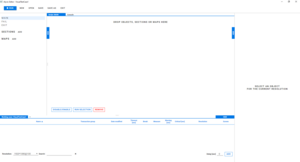Software:Alyvix
 Multisite Python GUI
displaying an overview of monitored systems | |
| Developer(s) | Violet Atom Sagl (Alan Pipitone) and Würth Phoenix Srl (Francesco Melchiori) |
|---|---|
| Initial release | Version 3.0 2020 |
| Stable release | 3.5.0[1]
/ 2023-09-14 |
| Written in | Python 3 |
| Operating system | Microsoft Windows |
| Type | IT monitoring, Synthetic monitoring and Application performance management |
| License | The Open Source GNU GPL v3 |
| Website | alyvix |
Alyvix is an open source[2][3] software application developed in Python 3 for IT monitoring, Synthetic monitoring and Application performance management on Windows computers. It is used for visually monitoring fixed applications, streamed applications (including encrypted ones[4]), and websites, as well as for robotic process automation.
Alyvix allows you to interact with an application's graphical user interface (GUI) to describe what should be seen onscreen after a sequence of interactions, and then later compare it whenever desired to the current GUI in that state.
Operation
Alyvix works in two main stages: GUI description, and interactive GUI replay. In the description phase (using Alyvix Editor), Alyvix captures the screen and then allows the user to describe what to look for,[5] such as images, text labels, buttons and text fields, by drawing and annotating directly on the screen capture.
The user then combines these elements with a visual scripting language Visual programming language that describes a sequence of desired interaction steps (for instance, clicking on one of the buttons, or inserting a predefined string into one of the text fields) and how those steps proceed from one to the next, along with the original series of screen grabs. This description is then saved in an open format called a test case.
Once this test case is created, Alyvix can use it to interactively replay that application interaction description as many times as you want while the application is "live". In this mode (called Alyvix Robot), Alyvix attempts to visually recognize what is shown in the GUI at a particular moment using the open source OpenCV recognizer. It then cycles through the recognition and interaction phases, applying the user-defined actions in the current step to the interface it sees.
Use in Monitoring
While up to this point Alyvix can be used for automation, it also allows you to declare warning and critical thresholds that are useful for monitoring, based on visual recognition timeouts. When a timeout is exceeded, it can then be reported to a monitoring system using the Nagios protocol.
See also
References
- ↑ "Alyvix Stable Release 3.5.0" (in en). Alyvix. https://alyvix.com/learn/release_notes/release_notes_35.html#release-notes-v3-5-0. Retrieved 2023-09-14.
- ↑ "Alyvix via Python Pip" (in en). PyPi. https://pypi.org/project/alyvix/. Retrieved 2023-06-07.
- ↑ "SourceForge Alyvix Review" (in en). Source Forge. https://sourceforge.net/software/product/Alyvix/. Retrieved 2023-10-31.
- ↑ "Alyvix: Under the Hood" (in en). FOSDEM 2017. https://archive.fosdem.org/2017/schedule/event/alyvix/. Retrieved 2023-12-01.
- ↑ "Digital Innovation through the Lens of Alyvix" (in en). SFSCON. https://www.sfscon.it/talks/digital-innovation-through-the-lens-of-alyvix/. Retrieved 2023-12-06.
 |

